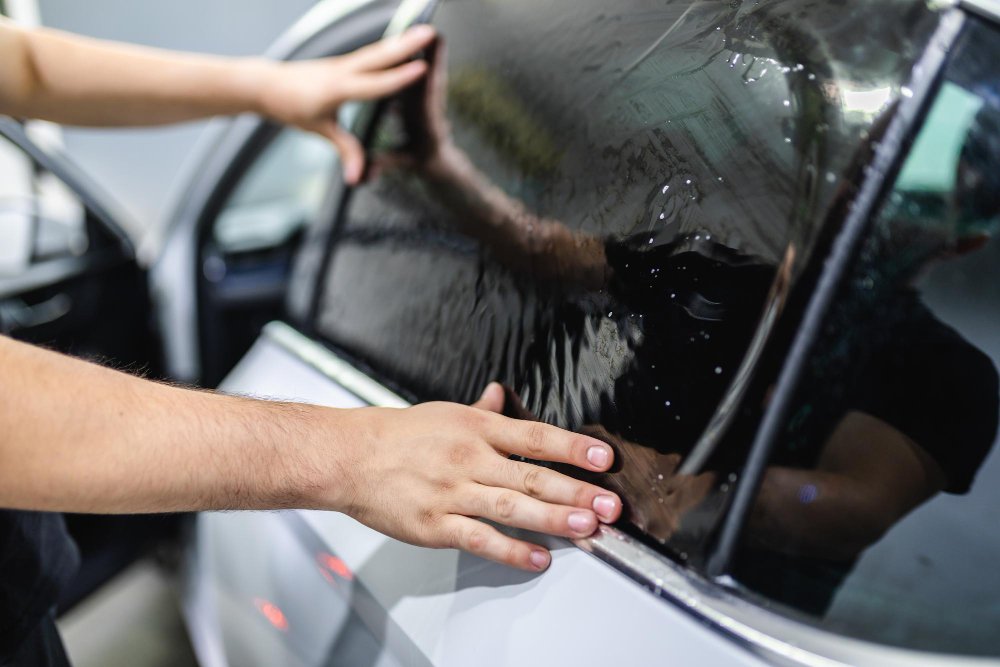Your Comprehensive Overview to Do It Yourself Window Tinting: Idea
Undertaking a DIY window tinting project provides a possibility to improve both the capability and aesthetics of your area. Before beginning on this undertaking, it is important to browse the intricacies of regional tinting policies and choose an ideal movie that aligns with your objectives.
Recognizing Home Window Tinting Regulations
Navigating the detailed landscape of home window tinting legislations is crucial for any DIY enthusiast looking for to enhance their automobile's looks and convenience. Each state in the U.S. has particular policies relating to the allowed levels of color on different home windows, which can considerably affect your decision-making procedure.
Typically, these regulations dictate the optimum allowed Noticeable Light Transmission (VLT) percentage, which describes the quantity of light that can go through the tinted home windows. For example, some states allow only a specific percent of color on the front windshield, while enabling darker tones on rear windows. Compliance with these regulations is essential, as failure to adhere can lead to penalties or the requirement to get rid of the tint completely.
In addition, there are usually distinctions in between passenger automobiles and commercial automobiles, with different guidelines applying to each classification. It's suggested to consult your neighborhood Department of Electric motor Cars or equivalent authority to collect precise details tailored to your area. Comprehending these legislations not only makes sure legal conformity but likewise improves security by keeping exposure and protecting against possible threats while driving.
Choosing the Right Color Movie
Choosing the ideal tint movie is a vital step in the DIY window tinting procedure, as it directly influences both the look and functionality of your car's home windows. Numerous aspects should guide your option, including the kind of film, its lawful compliance, and your wanted end results.
First, think about the various sorts of color movies offered: dyed, metalized, ceramic, and crossbreed. Colored films give a fundamental degree of privacy and warmth reduction but may discolor with time. Metalized movies supply improved warm being rejected and longevity however can disrupt digital signals. Ceramic movies, while a lot more costly, give premium warmth resistance and UV security without signal interruption.
Next, ensure that the film follows neighborhood policies worrying noticeable light transmission (VLT) percents. Compliance with these laws is crucial to prevent penalties and make sure safety.
Important Devices for DIY Tinting
Having chosen the best color film for your windows, the next action entails collecting the necessary tools to guarantee an effective installment. The key devices you will certainly need additional info consist of an energy knife or a razor blade, which is important for reducing the color movie to the desired size. A squeegee is also essential, as it aids get rid of air bubbles and smooth out the movie throughout application.

Furthermore, consider making use of a heat gun or hairdryer, as this can aid mold and mildew the color film to the contours of the window and promote adherence. Ultimately, handwear covers are advisable to he has a good point avoid fingerprints on the movie throughout installation. By gathering these vital tools, you will certainly be well-prepared to tackle your DIY window tinting job properly.
Step-by-Step Application Refine
Begin by completely cleaning the home window surface to guarantee optimum bond of the tint film. When the home window is clean, measure the tint movie against the window, permitting for a slight overlap on all sides.
Following, prepare a service of water and a couple of drops of child shampoo in a spray bottle. Gently spray the window surface and the adhesive side of the movie. This solution will enable repositioning throughout application. Carefully align the movie with the top of the home window, ensuring it is straight. Press the movie against the glass, beginning with the facility and working outside to eliminate air bubbles. Utilize a squeegee to smooth the movie, using company, also stress.
Allow the color look at here now to cure for at least 24 hours without rolling down the home windows. Comply with these steps faithfully for optimum results in your DIY window tinting project.
Upkeep and Care Tips

It's recommended to wait at the very least a week after installation prior to cleansing your windows to allow the sticky to completely heal. During this first duration, avoid rolling down the home windows to stop any damage to the tint.
Normal upkeep involves checking the edges of the color for any kind of indications of gurgling or lifting. If you observe any issues, it's finest to address them immediately to prevent additional damage. In addition, beware with making use of home window treatments, such as shades or drapes, as they can create warmth that might jeopardize the color gradually.
Final Thought
Finally, undertaking a DIY home window tinting job requires careful consideration of local guidelines, option of proper tint movies, and the usage of important tools. An organized application process makes certain optimal outcomes, while routine upkeep adds to the long life of the color - Moro Auto Spa Window Tinting. By sticking to these guidelines, people can attain both visual enhancement and enhanced privacy in their spaces, making DIY home window tinting an important undertaking